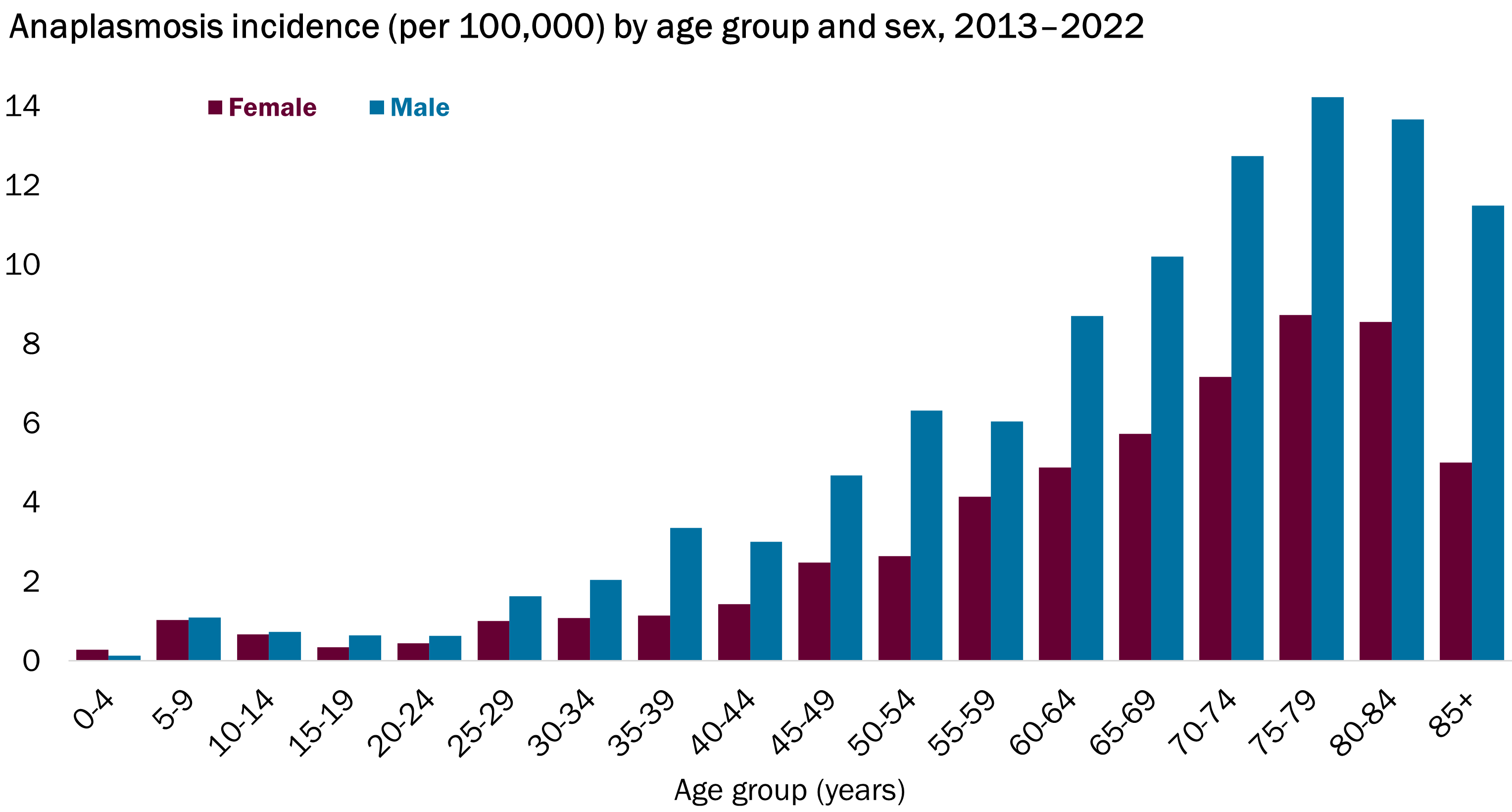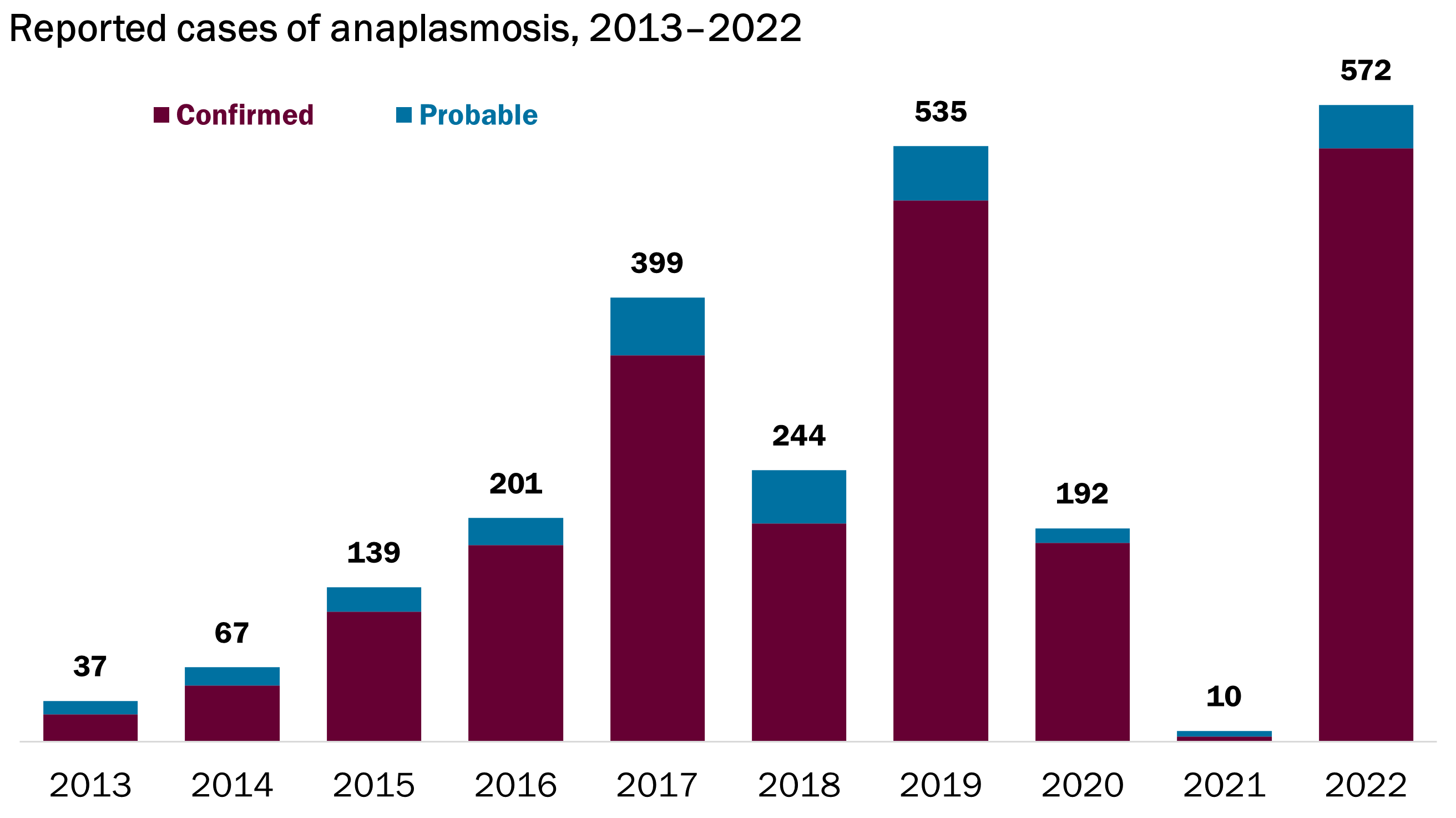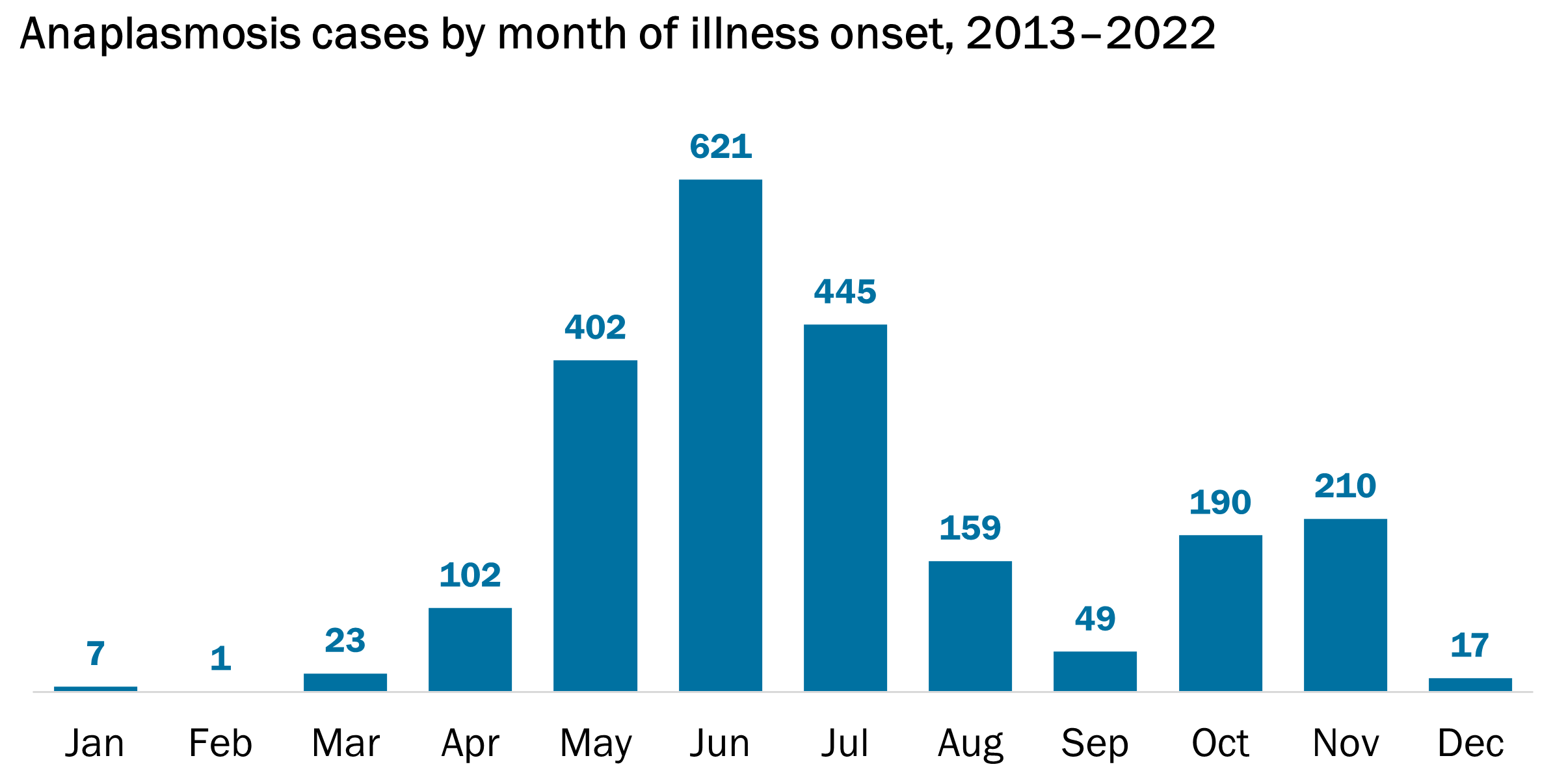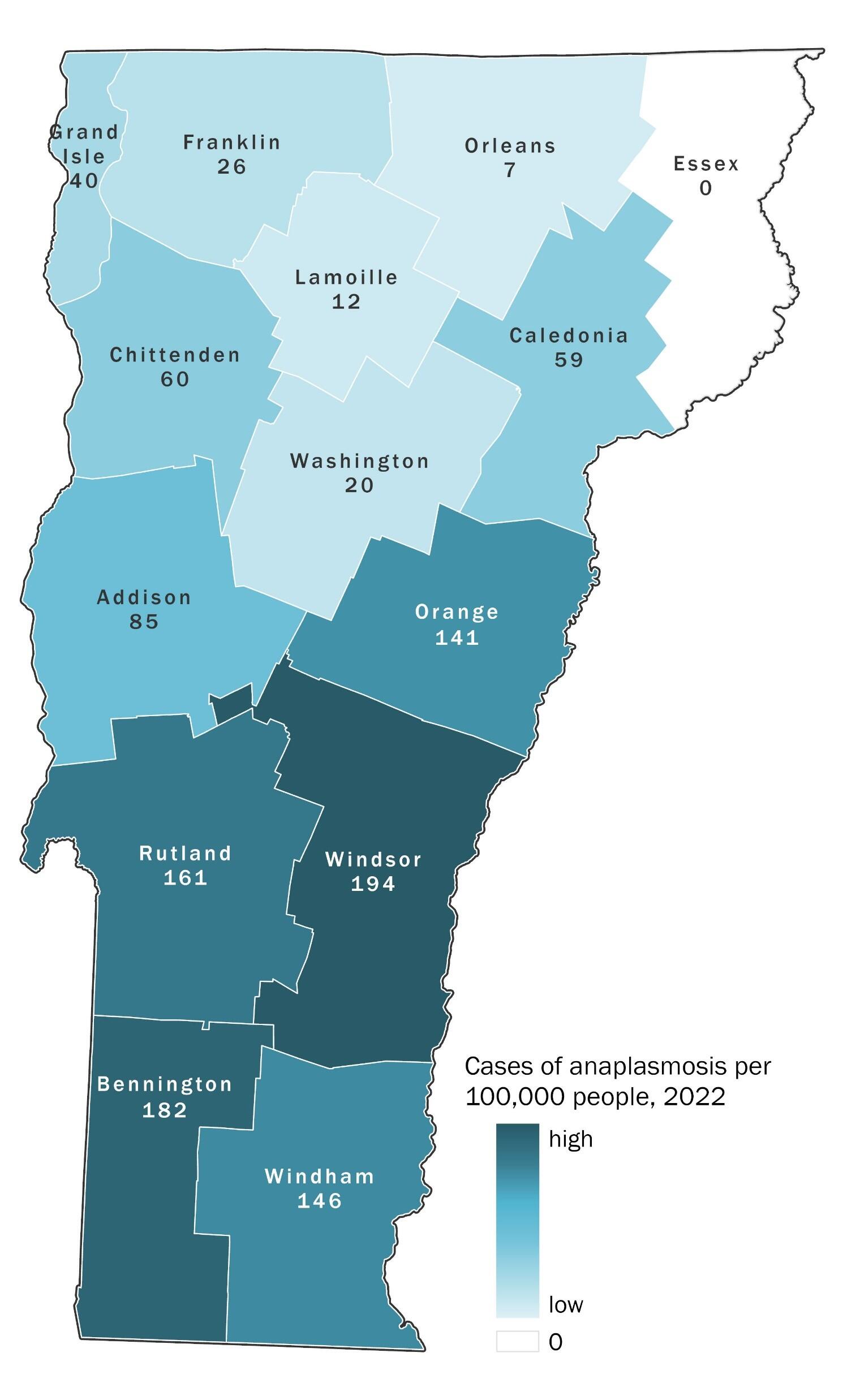Symptoms
Symptoms of anaplasmosis usually begin five to 21 days after a tick bite and can include:
Fever
Chills
Headache
Malaise
Muscle pain
Cough
Confusion
Nausea
Vomiting
Unlike Lyme disease, anaplasmosis does not commonly cause a rash. In fact, only 9% of Vermonters with anaplasmosis report having a rash. The most common symptoms reported in Vermont residents with anaplasmosis include fever, malaise, muscle aches, chills and headaches.
People with anaplasmosis may also develop anemia, low white blood cell counts, low platelet counts, and elevated liver enzymes.
Anaplasmosis can be a serious illness. Thirty-six percent of cases in Vermont are hospitalized for their illness. If not detected and treated promptly, anaplasmosis can be fatal in older patients and people with other health problems.
Who is Most at Risk?
Anyone can get anaplasmosis, but older adults and people with compromised immune systems are most at risk. In Vermont, anaplasmosis affects older adults and males more commonly than females.
Trends over Time
Anaplasmosis has been reported more frequently in Vermont. During 2008-2010, three or fewer cases were reported each year. Case counts have increased since 2011, with the highest number of cases reported in 2022.
Case numbers are low in 2020 and 2021 due to decreased reporting during the COVID-19 pandemic.
When are Vermonters at Risk?
Like Lyme disease, the risk for contracting anaplasmosis is highest during summer months. However, unlike Lyme disease, the risk for anaplasmosis increases again in the fall.
Where is the Risk Highest in Vermont?
While people can get become sick with anaplasmosis anywhere in the state, cases are most commonly reported from southern counties. Windsor County saw the highest number of anaplasmosis cases in 2022.
Diagnosis
Anaplasmosis can only be diagnosed by a health care provider. The symptoms of anaplasmosis can be non-specific and vary from person-to-person, making it difficult to recognize, but blood tests can help with diagnosis. If your health care provider suspects anaplasmosis or another tick bite illness, they may prescribe antibiotics while you wait for results. Learn more from the CDC.
Treatment
Anaplasmosis can be treated with antibiotics. Early treatment is important for avoiding more severe complications from anaplasmosis. Doxycycline is the recommended antibiotic treatment for anaplasmosis in adults and children of all ages. Learn more from the CDC.





